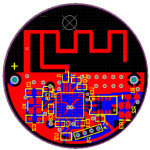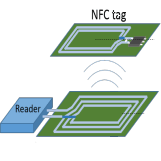col-pol cross-pol是怎么定义的?
1973年1月 IEEE Trans. On. A&P上有一篇"The Definition of Cross Polarization"的文章,有详细说明。
In IEEE Standard Definition, the definition is as followings:
1—When describing the polarizations over the radiation sphere [definition (A)], or a portion of it, reference lines shall be
specified over the sphere, in order to measure the tilt angles of the polarization ellipses [see: tilt angle (of a polarization
ellipse)] and the direction of polarization for linear polarizations. An obvious choice, though by no means the only one,
is a family of lines tangent at each point on the sphere to either the theta or phi coordinate line associated with a spherical
coordinate system of the radiation sphere.
2—At each point on the radiation sphere, the polarization is usually resolved into a pair of orthogonal polarizations, the
co-polarization and the cross polarization (See: co-polarization; cross polarization). To accomplish this, the co-polarization
must be specified at each point on the radiation sphere. For certain linearly polarized antennas, it is common
practice to define the co-polarization in the following manner: First specify the orientation of the co-polar electric field
vector at a pole of the radiation sphere. Then, for all other directions of interest (points on the radiation sphere), require
that the angle that the co-polar electric field vector makes with each great circle line through the pole remain constant
over that circle, the angle being that at the pole. In practice, the axis of the antenna’s main beam should be directed along
the polar axis of the radiation sphere. The antenna is then appropriately oriented about this axis to align the direction of
its polarization with that of the defined co-polarization at the pole. This manner of defining co-polarization can be
extended to the case of elliptical polarization by defining the constant angles using the major axes of the polarization
ellipses rather than the co-polar electric field vector. The sense of polarization must also be specified.
3—The polarization pattern [definition (B)] generally has the shape of a dumbbell. The polarization ellipse
antenna in the given direction is similar to one that can be inscribed in the dumbbell shape with points of tangency
maxima and minima points; thus, the axial ratio and tilt angle can be obtained from the polarization pattern.








